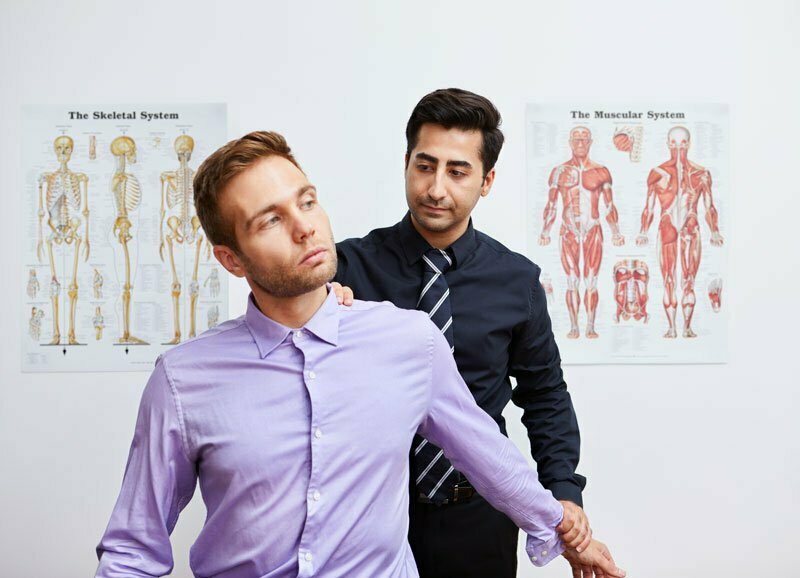Can Long COVID affect your musculoskeletal system?


Long COVID is an umbrella term used to describe both the acute COVID-19 infection and any residual post-COVID-19 symptoms that last longer than 4 weeks1 and are not explained by an alternative diagnosis. Just like the infectious period of COVID-19, the signs and symptoms of Long COVID are on a spectrum, ranging from a mild residual cough, to more severe symptoms like difficulty breathing, shortness of breath, and nerve or muscle damage. On this spectrum, up to 65% of patients may experience musculoskeletal (MSK)-related symptoms.1 such as muscle fatigue (49.1%), myalgia or muscle pain (34.8%), and arthralgia or joint pain (33%).2
Some trends emerging in recent studies demonstrate that certain groups might be more susceptible to MSK pain after having COVID-19, including females, older individuals, those who have a higher body mass index or have myalgia upon hospital admission for COVID-19, those with co-morbidities, and individuals who have reduced physical or functional state prior to being infected.1 Other studies have reported reduced muscle strength,3 chronic fatigue conditions4 and in severe cases, the progressive breakdown of muscle fibers.5
If you are feeling residual muscle or joint pain after having COVID-19, a chiropractor can help find ways to alleviate your symptoms. Here’s how:
Chiropractors are trained to investigate potential causes of your MSK complaints and more specifically, determining the best course of treatment. Research shows forms of manual and soft tissue therapies are effective in targeting blood flow to areas of injury and promote healing as well as relieving joint pressure and resetting pain receptors.6,7 Usually, one or more of these hands-on approaches used by chiropractors result in pain relief regardless of the cause.
Chiropractors are also well-versed in implementing a variety of adjunctive treatments, including modalities such as Transcutaneous Electrical Nerve Stimulation (TENS), interferential current (IFC), and Shockwave or Low-Level Light Therapies, that may also produce similar healing and pain relieving effects.8,9,10,11
In treating Long COVID symptoms, some clinical considerations would also be given to the type, frequency, and manner in which the chiropractor conducts supervised or at home physical therapy. For example, following a thorough history and physical exam, a chiropractor may create a treatment plan that includes a combination of manual therapies, modalities, as well as rehabilitation exercises depending on the individual needs of each patient. However, a patient suffering from Long COVID related muscle and joint pain may be advised to perform less strenuous rehabilitation movements to ensure their MSK system can adapt and heal effectively. In some cases, additional measures, such as the use of Pulse Oximeter to monitor ones oxygen levels during exercise may be required.
Beyond physical activity rehabilitation and pain management, chiropractors can also advise patients on ways to conserve energy when performing their daily activities or physical therapy exercises. Similarly, ergonomic strategies may be recommended at the workplace or home to facilitate essential daily tasks. As part of a healthcare team, visiting a chiropractor can also become a follow-up point of contact where the patient’s progress can be monitored, or referrals can be appropriately written for further investigation.
If you continue to feel MSK pain after experiencing COVID, book an appointment with your chiropractor to discuss treatment options that will help alleviate your symptoms.
References:
1. Khoja, O., et al. Clinical characteristics and mechanisms of musculoskeletal pain in long COVID. J Pain Res. 2022 Jun; 15:1729-48.
2. Tharani, SA., and Borkar, P. Prevalence of musculoskeletal disorders in post-COVID-19 patients – a systematic review. Int J Health Sci Res. 2022 Mar; 12(3):374-80.
3. Hasan LK., et al. Effects of COVID-19 on the musculoskeletal system: a clinician’s guide. Orth Res Rev. 2021 Sep; 13:141-50.
4. Crook H., et al. Long COVID – mechanisms, risk factors and management. BMJ. 2021 Jul; 374:n1648.
5. Dos Santos, PK., et al. The musculoskeletal involvement after mild to moderate COVID-19 infection. Front Phys. 2022 Mar; 13:813924.
6. Bialosky JE., et al. The mechanisms of manual therapy in the treatment of musculoskeletal pain: a comprehensive model. Man Ther. 2010 Oct: 14(5):531-38.
7. Ajimsha MS., et al. Effectiveness of myofascial release: systematic review of randomized controlled trials. J Bodyw Mov Ther. 2015 Jan; 19(1):102-12.
8. DeSantana, JM., et al. Effectiveness of transcutaneous electrical nerve stimulation for treatment of hyperalgesia and pain. Curr Rheumatol Rep. 2008 Dec; 10(6):492-99.
9. Fuentes, JP., et al. Effectiveness of interferential current therapy in the management of musculoskeletal pain: a systematic review and meta-analysis. Phys Ther. 2010 Sep; 90(9): 1219-38.
10. Schmitz, C., et al. Efficacy and safety of extracorporeal shock wave therapy for orthopedic conditions: a systematic review on studies listed in the PEDro database. Br Med Bull. 2015 Nov; 116(1): 115-38.
11. Clijsen, R., et al. Effects of low-level laser therapy on pain in patients with musculoskeletal disorders: a systematic review and meta-analysis. Eu J Phys Rehab Med. 2017 Jan; 53(4):603-10.